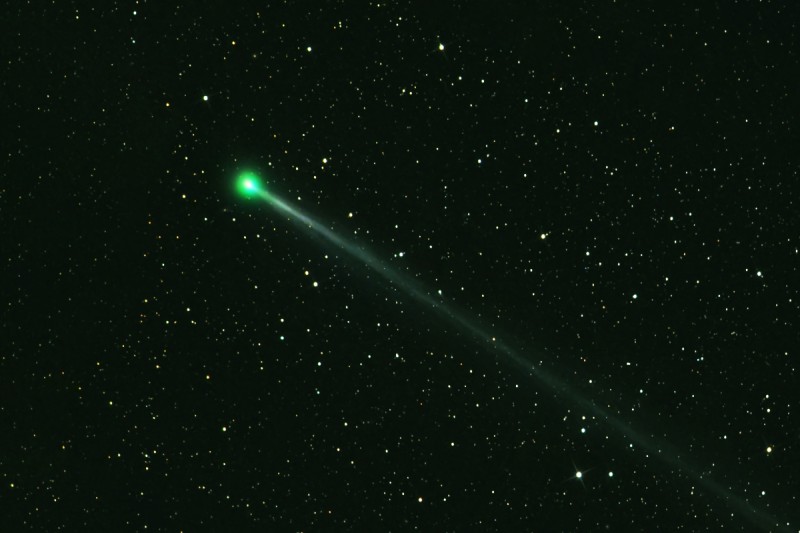Science
Australia Will Be Able to See a Newly-Found Green Comet ‘Nishimura’ This September

Later this month, a rare green comet that was just spotted in August might be seen in the Australian sky. The comet, officially known as C/2023 P1, will pass directly over Earth for the first time in 437 years. It is about a kilometer wide, and according to specialists, you may witness it for yourself in a few days.
Comet Nishimura
According to NASA, the comet was discovered on August 12 by Japanese space photographer Hideo Nishimura using a standard digital camera. Nishimura gave the comet its name after this discovery. Its brightness has since grown, and its path through the inner Solar System has been identified. Comets are called “dirty snowballs” because they are composed of ice, rock, and soil. The high gas concentration in Nishimura is what gives it its green color, though.
When will Australia be able to see Comet Nishimura?
Since comets are unexpected, Nishimura may be killed by the Sun’s strong heat because it is traveling closer to the Sun than Mercury. However, there is a potential that Nishimura will survive and unexpectedly brighten, becoming apparent to the naked eye. The last time it passed close to the Sun (and possibly came closer to Earth) was around the year 1590, before the invention of the telescope, according to Dr. Paul Chodas, director of NASA’s Center for Near Earth Object Studies. This celestial event only occurs once every 430 to 440 years. As a result, it won’t be apparent until at least 2458.
The optimum window for viewing the comet in Australia will be from September 20 to 27, when its head will set around an hour after the sun. On September 23, it will be the farthest from the Sun.
How to see the once-in-a-lifetime comet
Since this may be our only opportunity to see the comet, experts have provided some helpful advice to ensure your greatest chance of catching a look.
You’ll need to get up before sunrise if you want to see it before it disappears. In the hours before dawn, locate the Leo constellation on the eastern horizon. Binoculars or a small telescope will be necessary for the best view. If you’re looking for some additional resources to help you find the comet, have a look at this list of astronomy apps by Space.
-

 Sports4 weeks ago
Sports4 weeks agoFIFA Club World Cup 2025: Complete List of Qualified Teams and Groups
-

 Sports3 weeks ago
Sports3 weeks agoAl Ahly vs Inter Miami, 2025 FIFA Club World Cup – Preview, Prediction, Predicted Lineups and How to Watch
-
Health1 week ago
Back to Roots: Ayurveda Offers Natural Cure for Common Hair Woes
-

 Tech2 weeks ago
Tech2 weeks agoFrom Soil to Silicon: The Rise of Agriculture AI and Drone Innovations in 2025
-

 Sports3 weeks ago
Sports3 weeks agoFIVB Men’s Volleyball Nations League 2025: Full Schedule, Fixtures, Format, Teams, Pools and How to Watch
-

 Science4 weeks ago
Science4 weeks agoEverything You Need to Know about Skywatching in June 2025: Full Moon, New Moon, Arietid Meteors, and Planetary Marvels
-

 Startup3 weeks ago
Startup3 weeks agoHow Instagram Is Driving Global Social Media Marketing Trends
-

 Television4 weeks ago
Television4 weeks agoTribeca Festival 2025: Date, Time, Lineups, Performances, Tickets and How to Watch













